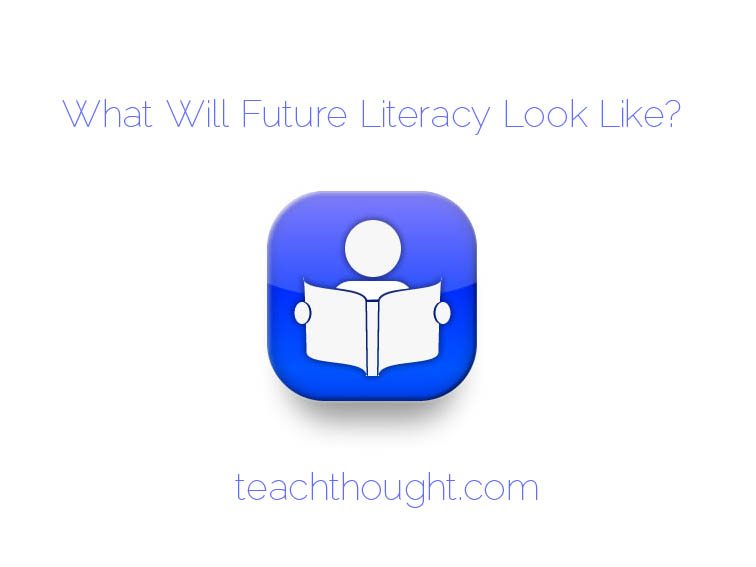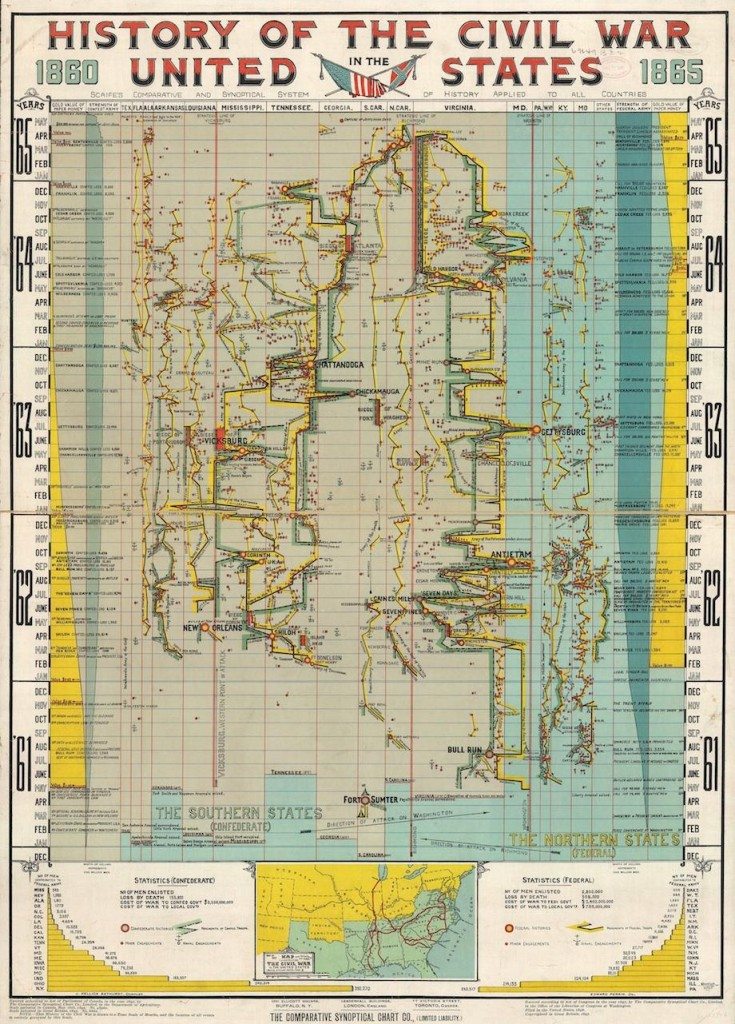 Is The Future Of Reading Not Reading At All? The Impact Of Visual & Social Literacy
Is The Future Of Reading Not Reading At All? The Impact Of Visual & Social Literacy
by Terry Heick
Slate recently stumbled upon an infographic that mapped the civil war.
And it’s 100 years old. (See below.)
You can find a proper zoomable version for careful study at the Library of Congress. In short, it’s a wonderfully and maddeningly detailed graphic that attempts to encapsulate the American Civil War in a single image. It includes relevant information from the chronological, geographical, human, and financial perspectives of the war, including death, economic value, and troop movements.
Which got me thinking about reading.
In 2014, reading on digital devices is a kind of competition–an article, video, app, social reader, or even an eBook has to survive a kind of competition for your attention. A reader has to choose to first to become a reader in lieu of other things to do on said device.
And then, when the choice is made to read, you have to choose what to read–it has to be interesting. The headline has to promise you something. It’s got to be important enough to survive your temptation to skim three hundred things instead of reading three.
But that’s not easy, so in response we learn to read headlines instead paragraphs. Not always, but often enough that creators of the content you read are learning to package it so you can fit in more. And in spots, this even applies to books.
Infographics As A Symbol
Infographics can be thought of as symbolic of this kind of trend. The trend in their design has moved from compelling visualizations of complex information to something different–slick, eye-catching colors and shapes for easy consumption and social sharing.
Clearly not all infographics should be impossibly complex–and ambitious–demonstrations of merging irrelevant data with bad graphic design. But in this trend towards quick and easy, might we be missing out on a larger opportunity?
Where content is both visual and complex? Where it offers both an immediate feeling of “Cool,” and “I get it” while also rewarding closer scrutiny?
A Handful Of Larger Questions About Future Literacy
Should infographics–and digital content in general–be more like reading, depending on reader endurance to decode extensive text?
Or is the future of literacy–at least digital literacy–visual? And is that a bad thing–books filling one role while digital and social content fills another?
Anything published on the internet has to compete with related content that’s more engaging–a video, a tweet, or conversation, or a gif animation. That puts tremendous pressure on the writer to engage the reader on several different levels.
Increasingly visual content is as much a cause as an effect.
12 Questions To Guide A Conversation About Future Literacy
Principles of digital literacy may be worth considering. For now, here are 12 (or so) questions to consider.
1. Could it be that digital media could one day become entirely visual? And thus the core of literacy itself for new generations of readers not raised on books but tablets and smartphones?
2. Is this a rightful evolution, or a byproduct of bad consumption habits?
3. And if so, how should media change in both form and structure to accommodate changing reader habits and prevailing local technology?
4. What does it mean to be literate in 2014? Is simple decoding enough? What about other modes–colors and font and white space and sharing?
5. Is text-based literacy even the best starting point anymore?
6. And what about digital citizenship–is it a new strand of literacy?
7. How about knowing what to share, when, with whom, and through what app?
8. How might we best organize our personal digital resources for long-term use and enjoyment?
9. How about skimming for relevancy and credibilty?
10. What roles do communities play in literacy? Is discovery a part of literacy?
11. What social layers make sense for connected consumption?
12. And what is ultimate the relationship between digital and physical media?
Not a bad idea for a student project. Not sure what any of it has to do with the Civil War graphic. Just got me thinking. Here’s the graphic by the way.
 “History of the Civil War in the United States, 1860-1865.” Comparative Synoptical Chart Co., Limited. Library of Congress.; What Will Future Literacy Look Like? The Impact Of Visual & Social Literacy
“History of the Civil War in the United States, 1860-1865.” Comparative Synoptical Chart Co., Limited. Library of Congress.; What Will Future Literacy Look Like? The Impact Of Visual & Social Literacy

